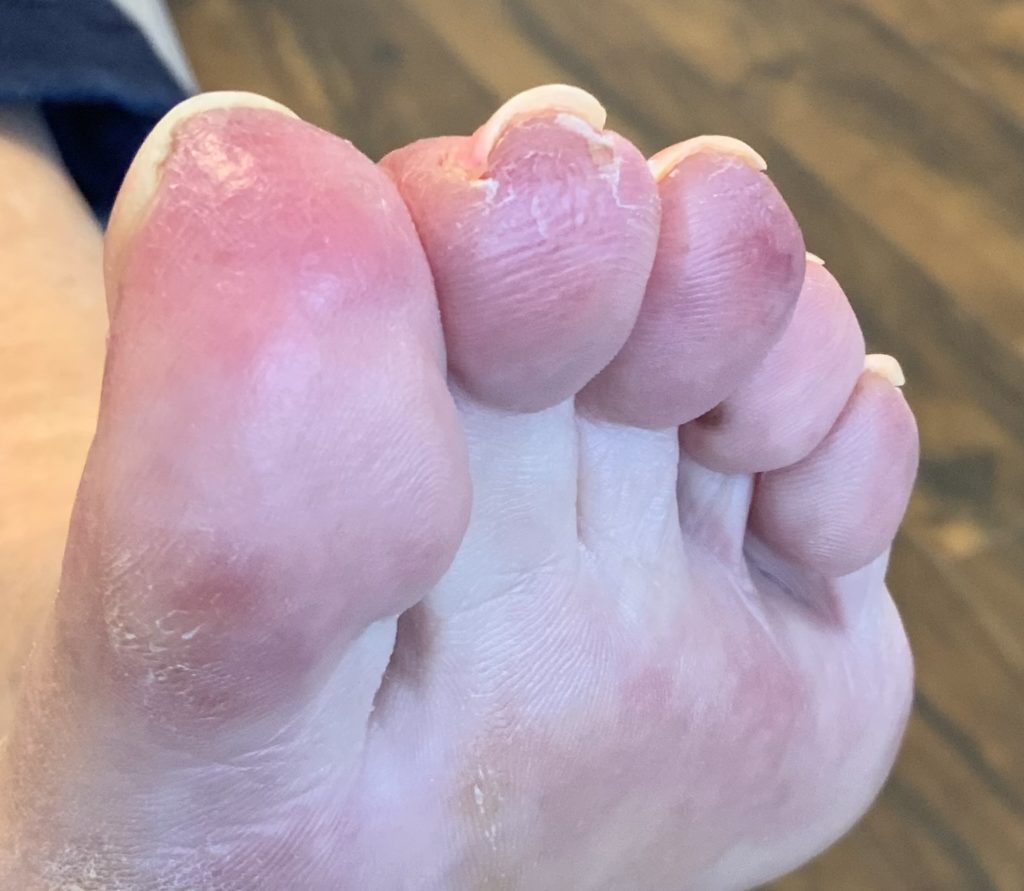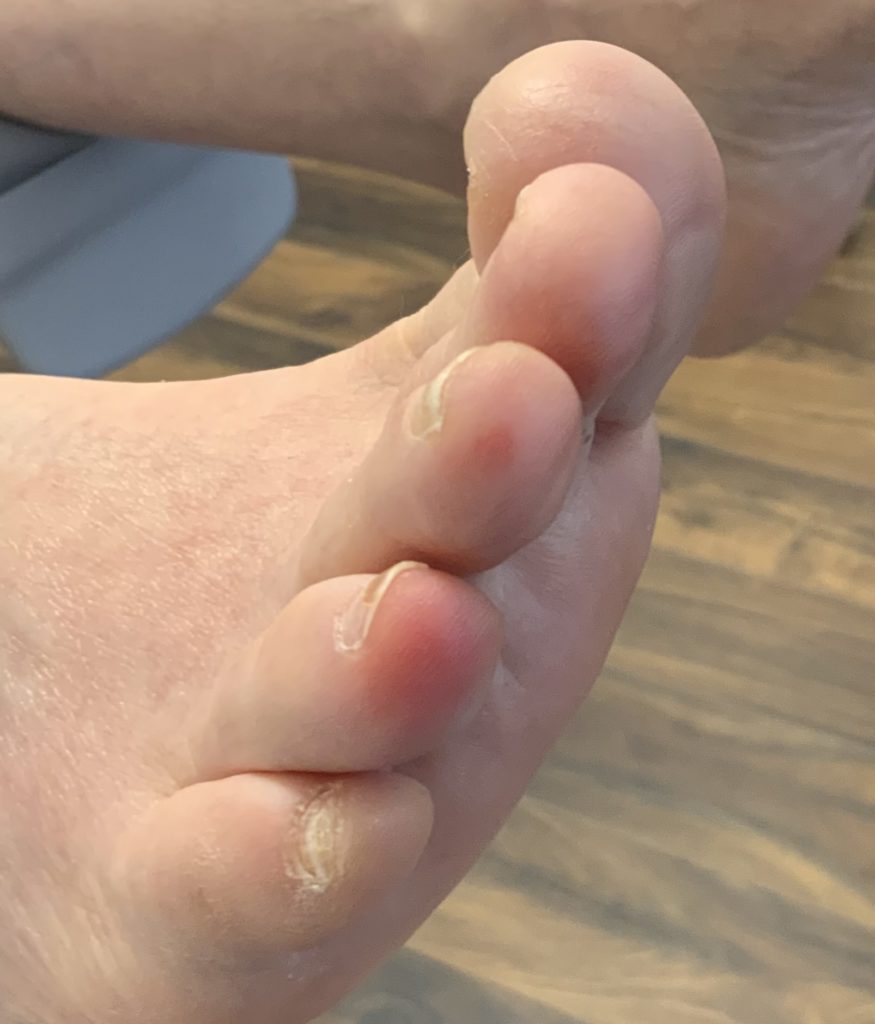With the temperature having dropped over the past few weeks (and still some time to go before it rises!), several patients have visited Feet Street Podiatry Clinic with concerns about unusual red/ purple blotches on their toes. These have (mostly) been diagnosed as chilblains! If you haven’t heard of this condition (or have recently been diagnosed with it), this article will give you information and advice.



What is a chilblain?
Chilblains are small, itchy swellings on the skin that usually occur as a reaction to cold temperatures. They most frequently affect the body’s extremities, such as the toes, fingers, heels, ears and nose. Chilblains can be uncomfortable, but they seldom cause any permanent damage. They normally heal within a few weeks if further exposure to the cold is avoided.
Signs and symptoms
Chilblains usually develop several hours after exposure to the cold. Patients typically notice a burning and itching sensation in the affected areas, which can become more intense with sudden increases in temperature (e.g. if you go into a warm room or use a hot water bottle). The affected skin may also swell and turn red or dark blue. In severe cases, the surface of the skin may break and sores or blisters can develop, leaving the area at risk of infection.
What causes chilblains?
Chilblains are the result of an abnormal reaction to cold temperatures. They’re common in the UK and Ireland because damp, cold weather is normal in the winter season. Some people develop chilblains that last for several months each winter. When the skin is cold, surface blood vessels near its surface get narrower. If the skin is then exposed to heat, the blood vessels become wider. If this happens too quickly, blood vessels near the surface of the skin can’t always handle the increased blood flow. This can cause blood to leak into the surrounding tissue, which may cause the swelling and itchiness associated with chilblains.
Am I at risk of chilblains?
Some people are more at risk of chilblains than others. This includes people with:
- poor circulation
- a family history of chilblains
- regular exposure to cold, damp or draughty conditions
- a poor diet or low body weight
- lupus – a long-term condition that causes swelling in the body’s tissues
- Raynaud’s phenomenon – a common condition that affects the blood supply to certain parts of the body, usually the fingers and toes
- People who smoke are more at risk of chilblains as nicotine constricts blood vessels.
Chilblains can also occur on areas of the feet exposed to pressure, such as a bunion or a toe that’s compressed by tight shoes.
Managing chilblains
It’s important not to scratch the skin as it can break easily and become infected. If this does occur, you should contact a health professional such as a podiatrist for advice and treatment.
The good news? Chilblains often get better on their own after a week or two without treatment.
If your chilblains are itchy, it may help to use a soothing lotion, such as calamine or witch hazel. Your podiatrist may also be able to recommend a suitable product such as Akilhiver or Snowfire.
If your chilblains are severe and keep returning, you should contact your GP. They may recommend taking a daily tablet or capsule of a medication called nifedipine. This works by relaxing the blood vessels to improve your circulation. Nifedipine can be used to help existing chilblains heal, or can be taken during the winter to stop them developing.
More advice on chilblains and other circulatory issues is available at Scleroderma & Raynaud’s UK (SRUK) https://www.sruk.co.uk/raynauds/chilblains/
